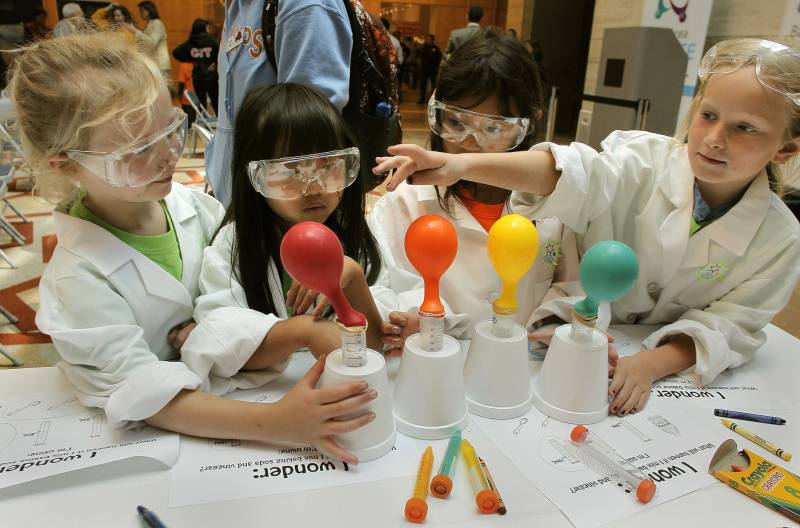With camps, however, having special weekly schedules — and with some parents trying to secure spots for multiple kids — it’s become a worryingly expensive dance.
“It is very complex. Parents are really finding that it takes just a massive amount of logistical arranging to figure out a whole summer of care,” Kiesling said.
How did summer camps become a part of American life?
In many ways, summer camps reveal a lot about child care and the social safety net in the United States.
Jessica Calarco, an associate professor from the University of Wisconsin-Madison, said workers in other countries like France get ample paid vacation time.
“That means that most families don’t have to worry about what to do with their kids during the summer because they have that time off to travel or to spend time with their kids at home,” Calarco said.
“In the U.S., we don’t provide those protections for families,” she added. “We don’t provide guaranteed paid time off for workers. And that means that most families can’t afford to just stay home with their kids while schools are closed.”
In the United States, said Calarco, this mismatch “disproportionately gets pushed onto moms to deal with, because we haven’t structured our society and our economy in ways that make it possible for families to try to fill these gaps.”
These aren’t new anxieties for American parents and caregivers. Kiesling, the journalist, used newspaper archives to look at the development of attitudes toward summer camps over the decades, dating as far back as the 1950s.
“There were these articles that were targeted to relatively affluent readers of The [New York] Times, [that] were really kind of stoking that concern, like, ‘It’s January. What is your child going to do? What exciting and enriching experience are you going to give them? All these camps fill up very quickly. You’ve got to get ready.’”
“And that just sort of ramped up over the years,” said Kiesling.
As sleepaway camps shut down in the 1970s due to economic factors, day camps began to evolve, and computer camps became all the rage in the ’80s. Then, Kiesling said, “There would be a backlash article: ‘What are we doing to our kids? They’re so overscheduled.’”
“Which is exactly what people say today,” she noted.
Before you say, ‘Back in my day … ’
American life has changed a lot in the past few decades. Namely, more two-parent families have both parents working.
Many American adults may remember childhood feeling much looser when it came to supervision. And while Kiesling said she doesn’t want to “impugn anybody’s memory of their childhood,” she believes there’s “a little bit of selective memory on that front.”
“There are adults now of all ages who remember this kind of pastoral childhood where they could go out in the morning and come back in the evening. I think often that was possible because they perhaps had a parent at home who was likely a mom at home,” she said.
Kiesling emphasized that while women have always been working outside of the home, that number soared in the middle of the 20th century.
“There are some kids who had wonderful kind of latchkey experiences, but then there were others who did not — who were placed with family members, or neighbors or really just left to kind of rattle around … [in] possibly unsafe situations,” she said.
Kiesling stressed that she wants to “honor the experiences that people have had of kind of unstructured childhoods,” but said she can’t help but feel skeptical when she perceives people using their own childhoods “as a cudgel to sort of beat modern parents with.”
So while some people call it “helicopter” parenting, Kiesling points out that the lack of a social safety net has left parents and kids on their own for a long time in the United States.
If you don’t send your kids to camp, you’re not alone
Calarco said it’s important to remember that camp is not a universal experience. Not every kid will attend one, and of the ones who do, many may choose a less expensive option — such as those run by the Boys and Girls Clubs, which offer enriching activities.
“Only about a third of kids in the U.S. go to camp during the summer, and less than 10% of them go to overnight camp,” Calarco said. “And essentially, summer is one of the most segregated times of the year, in part because of the high cost of camps. And that those kids who are going to summer camp are disproportionately affluent white kids.”
